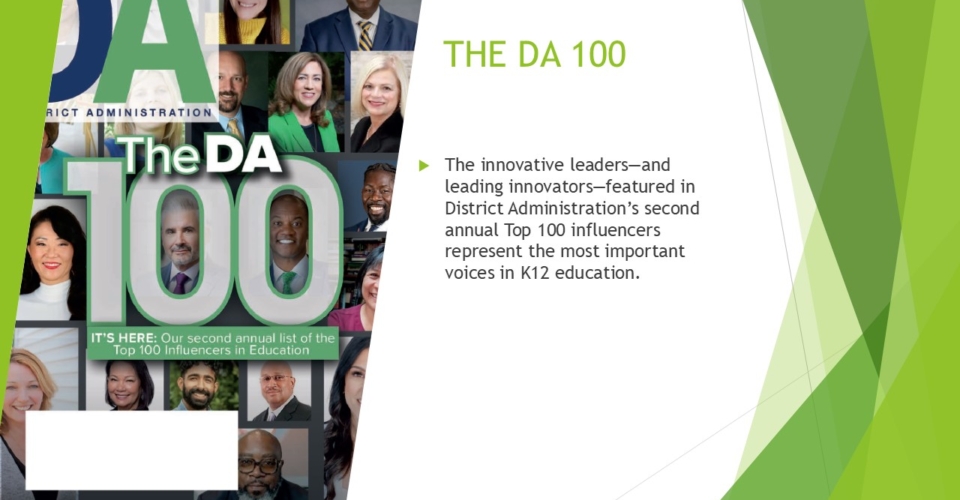In the 2021-22 school year, school districts leveraged ESSER funds to invest a staggering $18.9 billion in instructional materials to address pandemic learning loss, which disproportionately affected students who were already disadvantaged.
Two years later, states and districts are still focusing on the fundamentals of effective instruction through high-quality instructional materials—complete curricula that are aligned to rigorous standards and designed to be easy to use. High-quality instructional materials are also one of the clearest equity drivers for students.
Yet, while the impact of high-quality instructional materials is inarguable—with several studies showing that textbook choice has a “significant effect on test scores”—a high-quality curriculum cannot stand on its own. It must be wielded by educators who are empowered by high-quality professional learning—a sustained, job-embedded approach that is content-focused, collaborative, and individualized to improve student outcomes.
Talking Out of School podcast : Why is a “small-language model” better for K12?
This moment in time provides the education community with the necessary—and unique!—opportunity to align high-quality instructional materials, high-quality professional learning and exemplary teaching.
The success of high-quality instructional materials initiatives often hinges on two key factors:
- The delivery of high-quality professional learning that builds capacity across all levels and supports the community focused on implementing high-quality instructional materials.
- The delivery of high-quality instructional materials via reliable, accessible platforms that provide lesson planning, curriculum management capabilities, student resources and advanced analytics
How teacher success practices become second nature
For too long, implementations of high-quality instructional materials and high-quality professional learning have been plagued by poor outcomes, lack of accountability and low teacher engagement, despite significant funding and national attention.
Now, as the end of ESSER funds and impending budget cuts loom on the horizon, districts that fail to adopt a modern high-quality professional learning approach will struggle to leverage their investments in high-quality instructional materials and retain talented educators. It’s time for a novel approach to professional learning that supports the next generation of teachers and enables districts to maximize student outcomes, close equity gaps and create more engaging learning environments.
Districts should consider implementing professional learning that uses innovative, tech-powered platforms instead of outdated, low-touch alternatives. Partnerships between providers of high-quality professional learning and publishers of high-quality instructional materials represent a new way forward for schools and districts.
By driving alignment between high-quality professional learning and high-quality instructional materials and high-quality professional learning, schools and districts can support all educators and drive more equitable student outcomes. Benefits include:
- Putting learning into practice. One or two dedicated “professional development days” is not enough, and the idea that teachers can absorb the professional learning needed to teach high-quality instructional materials through a handful of development events is not realistic. Teachers need opportunities to put their learning into practice. High-quality curriculum publishers that give teachers on-the-job feedback, coupled with high-quality professional learning, can boost teaching development immensely. Teachers can introduce a new unit to students or try a different method, get pointers and tips from a platform in real-time, receive coaching and support in their professional learning, and then pivot immediately in the classroom. When teachers participate in this feedback loop multiple times a year—or even multiple times a week—best practices become second nature.
- Creating alignment. When implementing a new professional learning program, everyone—from teachers and principals to directors of instruction and superintendents—needs to be on the same page. When teachers feel unsupported in their work, they may not wish to stay in the profession long-term. Schools or districts should therefore consider using an online professional learning platform. A tech solution, in particular, can help get everyone together by giving all stakeholders a digital “third space” to share and discuss professional learning goals. Spaces like these are instrumental because to move forward effectively, everyone must be aligned in service of the ultimate goal: helping teachers so they can help students have successful learning experiences.
- Use data and personalization to give teachers insight—and an edge. With a job-embedded professional learning platform, teachers can track their own performance and student metrics, enabling data-driven adjustments to their teaching practices. This gives every teacher an edge because it allows them to see how their teaching plans are helping students have successful learning experiences. While it was difficult to know if previous incarnations were truly working, it is possible to make teachers’ (and students’) responses to innovative, 21st-century professional learning quantifiable and concrete.
We need a new approach to professional learning for a new generation of teachers—and a new generation of high-quality instructional materials. Aligning around both curricular goals and teacher support will lead to teachers not only having a better teaching experience with high-quality instructional materials but also a better teaching experience in general. Providing personalized, job-embedded, data-driven support will lead to immediate action in the classroom and, ultimately, improved student achievement.
As districts continue to grapple with learning loss, faltering rates of teacher retention and the need to ensure the success of their high-quality instruction initiatives, investing in a new approach to professional learning is more critical now than ever. Otherwise, districts risk being left behind, compromising teacher effectiveness, student outcomes and their ability to address the pressing educational challenges of our time.



